http://www.linuxjournal.com/content/queueing-linux-network-stack
Packet queues are a core component of any network stack or device. They
allow for asynchronous modules to communicate, increase performance and
have the side effect of impacting latency. This article aims to explain
where IP packets are queued on the transmit path of the Linux network
stack, how interesting new latency-reducing features, such as BQL, operate
and how to control buffering for reduced latency.

Figure 1. Simplified High-Level Overview of the Queues on the Transmit
Path of the Linux Network Stack
Driver Queue (aka Ring Buffer)
Between the IP stack and the network interface controller (NIC) lies the
driver queue. This queue typically is implemented as a first-in, first-out
(FIFO) ring buffer (
http://en.wikipedia.org/wiki/Circular_buffer)—just think of it as a
fixed-sized buffer. The driver
queue does not contain the packet data. Instead, it consists of descriptors
that point to other data structures called socket kernel buffers (SKBs,
http://vger.kernel.org/%7Edavem/skb.html),
which hold the packet data and are used throughout the kernel.

Figure 2. Partially Full Driver Queue with Descriptors Pointing to SKBs
The input source for the driver queue is the IP stack that queues IP
packets. The packets may be generated locally or received on one NIC to be
routed out another when the device is functioning as an IP router. Packets
added to the driver queue by the IP stack are dequeued by the hardware
driver and sent across a data bus to the NIC hardware for transmission.
The reason the driver queue exists is to ensure that whenever the
system has data to transmit it is available to the NIC for immediate
transmission. That is, the driver queue gives the IP stack a location
to queue data asynchronously from the operation of the hardware. An
alternative design would be for the NIC to ask the IP stack for data
whenever the physical medium is ready to transmit. Because responding
to this request cannot be instantaneous, this design wastes valuable
transmission opportunities resulting in lower throughput. The opposite
of this design approach would be for the IP stack to wait after a packet
is created until the hardware is ready to transmit. This also is not
ideal, because the IP stack cannot move on to other work.
Huge Packets from the Stack
Most NICs have a fixed maximum transmission unit (MTU), which is the
biggest frame that can be transmitted by the physical media. For Ethernet,
the default MTU is 1,500 bytes, but some Ethernet networks support Jumbo
Frames (
http://en.wikipedia.org/wiki/Jumbo_frame) of up to 9,000 bytes. Inside the IP network stack, the MTU can
manifest as a limit on the size of the packets that are sent to the
device for transmission. For example, if an application writes 2,000
bytes to a TCP socket, the IP stack needs to create two IP packets
to keep the packet size less than or equal to a 1,500 MTU. For large
data transfers, the comparably small MTU causes a large number of small
packets to be created and transferred through the driver queue.
In order to avoid the overhead associated with a large number of packets
on the transmit path, the Linux kernel implements several optimizations:
TCP segmentation offload (TSO), UDP fragmentation offload (UFO) and
generic segmentation offload (GSO). All of these optimizations allow the
IP stack to create packets that are larger than the MTU of the outgoing
NIC. For IPv4, packets as large as the IPv4 maximum of 65,536 bytes can
be created and queued to the driver queue. In the case of TSO and UFO,
the NIC hardware takes responsibility for breaking the single large
packet into packets small enough to be transmitted on the physical
interface. For NICs without hardware support, GSO performs the same
operation in software immediately before queueing to the driver queue.
Recall from earlier that the driver queue contains a fixed number of
descriptors that each point to packets of varying sizes. Since TSO,
UFO and GSO allow for much larger packets, these optimizations have the
side effect of greatly increasing the number of bytes that can be queued
in the driver queue. Figure 3 illustrates this concept in contrast with
Figure 2.

Figure 3. Large packets can be sent to the NIC when TSO, UFO or GSO
are enabled. This can greatly increase the number of bytes in the
driver queue.
Although the focus of this article is the transmit path, it is worth
noting that Linux has receive-side optimizations that operate
similarly to TSO, UFO and GSO and share the goal of reducing per-packet
overhead. Specifically, generic receive offload (GRO,
http://vger.kernel.org/%7Edavem/cgi-bin/blog.cgi/2010/08/30) allows the NIC
driver to combine received packets into a single large packet that is
then passed to the IP stack. When the device forwards these large packets,
GRO allows the original packets to be reconstructed, which is necessary
to maintain the end-to-end nature of the IP packet flow. However, there
is one side effect: when the large packet is broken up, it results in
several packets for the flow being queued at once. This
"micro-burst"
of packets can negatively impact inter-flow latency.
Starvation and Latency
Despite its necessity and benefits, the queue between the IP stack and
the hardware introduces two problems: starvation and latency.
If the NIC driver wakes to pull packets off of the queue for transmission
and the queue is empty, the hardware will miss a transmission opportunity,
thereby reducing the throughput of the system. This is referred to
as starvation. Note that an empty queue when the system does not
have anything to transmit is not starvation—this is normal. The
complication associated with avoiding starvation is that the IP stack
that is filling the queue and the hardware driver draining the queue run
asynchronously. Worse, the duration between fill or drain events varies
with the load on the system and external conditions, such as the network
interface's physical medium. For example, on a busy system, the IP stack
will get fewer opportunities to add packets to the queue, which increases
the chances that the hardware will drain the queue before more packets
are queued. For this reason, it is advantageous to have a very large
queue to reduce the probability of starvation and ensure high throughput.
Although a large queue is necessary for a busy system to maintain high
throughput, it has the downside of allowing for the introduction of a
large amount of latency.
Figure 4 shows a driver queue that is almost full with TCP segments
for a single high-bandwidth, bulk traffic flow (blue). Queued last is
a packet from a VoIP or gaming flow (yellow). Interactive applications
like VoIP or gaming typically emit small packets at fixed intervals that
are latency-sensitive, while a high-bandwidth data transfer generates a
higher packet rate and larger packets. This higher packet rate can fill
the queue between interactive packets, causing the transmission of the
interactive packet to be delayed.

Figure 4. Interactive Packet (Yellow) behind Bulk Flow Packets (Blue)
To illustrate this behaviour further, consider a scenario based on the
following assumptions:
-
A network interface that is capable of transmitting at 5 Mbit/sec or
5,000,000 bits/sec.
-
Each packet from the bulk flow is 1,500 bytes or 12,000 bits.
-
Each packet from the interactive flow is 500 bytes.
-
The depth of the queue is 128 descriptors.
-
There are 127 bulk data packets and one interactive packet queued last.
Given the above assumptions, the time required to drain the 127 bulk
packets and create a transmission opportunity for the interactive packet
is (127 * 12,000) / 5,000,000 = 0.304 seconds (304 milliseconds for those
who think of latency in terms of ping results). This amount of latency
is well beyond what is acceptable for interactive applications, and this
does not even represent the complete round-trip time—it is only the
time required to transmit the packets queued before the interactive one. As
described earlier, the size of the packets in the driver queue can be
larger than 1,500 bytes, if TSO, UFO or GSO are enabled. This makes the
latency problem correspondingly worse.
Large latencies introduced by over-sized, unmanaged queues is known as
Bufferbloat (
http://en.wikipedia.org/wiki/Bufferbloat). For a more
detailed explanation of this phenomenon, see the
Resources for this article.
As the above discussion illustrates, choosing the correct size for
the driver queue is a Goldilocks problem—it can't be too small, or
throughput suffers; it can't be too big, or latency suffers.
Byte Queue Limits (BQL)
Byte Queue Limits (BQL) is a new feature in recent Linux kernels
(> 3.3.0) that attempts to solve the problem of driver queue sizing
automatically. This is accomplished by adding a layer that enables and
disables queueing to the driver queue based on calculating the minimum
queue size required to avoid starvation under the current system
conditions. Recall from earlier that the smaller the amount of queued
data, the lower the maximum latency experienced by queued packets.
It is key to understand that the actual size of the driver queue is not
changed by BQL. Rather, BQL calculates a limit of how much data (in bytes)
can be queued at the current time. Any bytes over this limit must be
held or dropped by the layers above the driver queue.
A real-world example may help provide a sense of how much BQL affects
the amount of data that can be queued. On one of the author's servers, the
driver queue size defaults to 256 descriptors. Since the Ethernet MTU is
1,500 bytes, this means up to 256 * 1,500 = 384,000 bytes can be queued
to the driver queue (TSO, GSO and so forth are disabled, or this would be much
higher). However, the limit value calculated by BQL is 3,012 bytes. As you
can see, BQL greatly constrains the amount of data that can be queued.
BQL reduces network latency by limiting the amount of data in the driver
queue to the minimum required to avoid starvation. It also has the
important side effect of moving the point where most packets are queued
from the driver queue, which is a simple FIFO, to the queueing discipline
(QDisc) layer, which is capable of implementing much more complicated
queueing strategies.
Queueing Disciplines (QDisc)
The driver queue is a simple first-in, first-out (FIFO) queue. It treats
all packets equally and has no capabilities for distinguishing between
packets of different flows. This design keeps the NIC driver software
simple and fast. Note that more advanced Ethernet and most wireless
NICs support multiple independent transmission queues, but similarly, each
of these queues is typically a FIFO. A higher layer is responsible for
choosing which transmission queue to use.
Sandwiched between the IP stack and the driver queue is the queueing
discipline (QDisc) layer (Figure 1). This layer implements the
traffic management capabilities of the Linux kernel, which include traffic
classification, prioritization and rate shaping. The QDisc layer is
configured through the somewhat opaque tc command. There are three key
concepts to understand in the QDisc layer: QDiscs, classes and filters.
The QDisc is the Linux abstraction for traffic queues, which are more
complex than the standard FIFO queue. This interface allows the QDisc to
carry out complex queue management behaviors without requiring the IP
stack or the NIC driver to be modified. By default, every network interface
is assigned a pfifo_fast QDisc
(
http://lartc.org/howto/lartc.qdisc.classless.html), which
implements a simple three-band
prioritization scheme based on the TOS bits. Despite being the default,
the pfifo_fast QDisc is far from the best choice, because it defaults to
having very deep queues (see txqueuelen below) and is not flow aware.
The second concept, which is closely related to the QDisc, is the
class. Individual QDiscs may implement classes in order to handle subsets
of the traffic differently—for example, the Hierarchical Token Bucket
(HTB,
http://lartc.org/manpages/tc-htb.html). QDisc allows
the user to configure multiple classes, each with a
different bitrate, and direct traffic to each as desired. Not all QDiscs
have support for multiple classes. Those that do are referred to as classful
QDiscs, and those that do not are referred to as classless QDiscs.
Filters (also called classifiers) are the mechanism used to direct
traffic to a particular QDisc or class. There are many different filters
of varying complexity. The u32 filter
(
http://www.lartc.org/lartc.html#LARTC.ADV-FILTER.U32) is the most
generic, and the flow
filter is the easiest to use.
Buffering between the Transport Layer and the Queueing Disciplines
In looking at the figures for this article, you may have noticed that there
are no packet queues above the QDisc layer. The network stack places
packets directly into the QDisc or else pushes back on the upper layers
(for example, socket buffer) if the queue is full. The obvious question that follows
is what happens when the stack has a lot of data to send? This can occur
as the result of a TCP connection with a large congestion window or, even
worse, an application sending UDP packets as fast as it can. The answer
is that for a QDisc with a single queue, the same problem outlined in
Figure 4 for the driver queue occurs. That is, the high-bandwidth or
high-packet rate flow can consume all of the space in the queue causing
packet loss and adding significant latency to other flows. Because Linux
defaults to the pfifo_fast QDisc, which effectively has a single queue
(most traffic is marked with TOS=0), this phenomenon is not uncommon.
As of Linux 3.6.0, the Linux kernel has a feature called TCP Small
Queues that aims to solve this problem for TCP. TCP Small Queues adds
a per-TCP-flow limit on the number of bytes that can be queued in the
QDisc and driver queue at any one time. This has the interesting side
effect of causing the kernel to push back on the application earlier,
which allows the application to prioritize writes to
the socket more effectively. At the time of this writing, it is still possible for single
flows from other transport protocols to flood the QDisc layer.
Another partial solution to the transport layer flood problem, which is
transport-layer-agnostic, is to use a QDisc that has many queues, ideally
one per network flow. Both the Stochastic Fairness Queueing (SFQ,
http://crpppc19.epfl.ch/cgi-bin/man/man2html?8+tc-sfq) and
Fair Queueing with Controlled Delay (fq_codel,
http://linuxmanpages.net/manpages/fedora18/man8/tc-fq_codel.8.html) QDiscs fit this problem
nicely, as they effectively have a queue-per-network flow.
How to Manipulate the Queue Sizes in Linux
Driver Queue:
The ethtool command
(
http://linuxmanpages.net/manpages/fedora12/man8/ethtool.8.html) is used to control the driver queue size for Ethernet
devices. ethtool also provides low-level interface statistics as well
as the ability to enable and disable IP stack and driver features.
The
-g flag to
ethtool displays the driver queue (ring) parameters:
# ethtool -g eth0
Ring parameters for eth0:
Pre-set maximums:
RX: 16384
RX Mini: 0
RX Jumbo: 0
TX: 16384
Current hardware settings:
RX: 512
RX Mini: 0
RX Jumbo: 0
TX: 256
You can see from the above output that the driver for this NIC defaults
to 256 descriptors in the transmission queue. Early in the Bufferbloat
investigation, it often was recommended to reduce the size of the driver
queue in order to reduce latency. With the introduction of BQL (assuming
your NIC driver supports it), there no longer is any reason to modify
the driver queue size (see below for how to configure BQL).
ethtool also allows you to view and manage optimization features, such
as TSO, GSO, UFO and GRO, via the
-k and
-K flags. The
-k flag displays
the current offload settings and
-K modifies them.
As discussed above, some optimization features greatly increase the
number of bytes that can be queued in the driver queue. You should
disable these optimizations if you want to optimize for latency over
throughput. It's doubtful you will notice any CPU impact or throughput
decrease when disabling these features unless the system is handling
very high data rates.
Byte Queue Limits (BQL):
The BQL algorithm is self-tuning, so you probably don't need to modify
its configuration. BQL state and configuration can be found in a /sys
directory based on the location and name of the NIC. For example:
/sys/devices/pci0000:00/0000:00:14.0/net/eth0/queues/tx-0/byte_queue_limits.
To place a hard upper limit on the number of bytes that can be queued,
write the new value to the limit_max file:
echo "3000" > limit_max
What Is txqueuelen?
Often in early Bufferbloat discussions, the idea of statically reducing
the NIC transmission queue was mentioned. The txqueuelen field in the
ifconfig command's output or the qlen field in the ip command's output
show the current size of the transmission queue:
$ ifconfig eth0
eth0 Link encap:Ethernet HWaddr 00:18:F3:51:44:10
inet addr:69.41.199.58 Bcast:69.41.199.63 Mask:255.255.255.248
inet6 addr: fe80::218:f3ff:fe51:4410/64 Scope:Link
UP BROADCAST RUNNING MULTICAST MTU:1500 Metric:1
RX packets:435033 errors:0 dropped:0 overruns:0 frame:0
TX packets:429919 errors:0 dropped:0 overruns:0 carrier:0
collisions:0 txqueuelen:1000
RX bytes:65651219 (62.6 MiB) TX bytes:132143593 (126.0 MiB)
Interrupt:23
$ ip link
1: lo: mtu 16436 qdisc noqueue state UNKNOWN
link/loopback 00:00:00:00:00:00 brd 00:00:00:00:00:00
2: eth0: mtu 1500 qdisc pfifo_fast state UP qlen 1000
link/ether 00:18:f3:51:44:10 brd ff:ff:ff:ff:ff:ff
The length of the transmission queue in Linux defaults to 1,000 packets,
which is a large amount of buffering, especially at low bandwidths.
The interesting question is what queue does this value control? One might
guess that it controls the driver queue size, but in reality, it serves
as a default queue length for some of the QDiscs. Most important,
it is the default queue length for the pfifo_fast QDisc, which is the
default. The "limit" argument on the tc command line can be used to
ignore the txqueuelen default.
The length of the transmission queue is configured with the ip or
ifconfig commands:
ip link set txqueuelen 500 dev eth0
Queueing Disciplines:
As introduced earlier, the Linux kernel has a large number of queueing
disciplines (QDiscs), each of which implements its own packet queues and
behaviour. Describing the details of how to configure each of the QDiscs
is beyond the scope of this article. For full details, see the tc man page
(
man tc). You can find details for each QDisc in
man tc qdisc-name
(for example,
man tc htb or
man tc
fq_codel).
TCP Small Queues:
The per-socket TCP queue limit can be viewed and controlled with the
following /proc file:
/proc/sys/net/ipv4/tcp_limit_output_bytes.
You should not need to modify this value in any normal situation.
Oversized Queues Outside Your Control
Unfortunately, not all of the over-sized queues that will affect your
Internet performance are under your control. Most commonly, the problem
will lie in the device that attaches to your service provider (such as DSL or
cable modem) or in the service provider's equipment itself. In the latter
case, there isn't much you can do, because it is difficult to control the
traffic that is sent toward you. However, in the upstream direction, you
can shape the traffic to slightly below the link rate. This will stop the
queue in the device from having more than a few packets. Many residential
home routers have a rate limit setting that can be used to shape below
the link rate. Of course, if you use Linux on your home gateway, you can
take advantage of the QDisc features to optimize further. There are many
examples of tc scripts on-line to help get you started.
Summary
Queueing in packet buffers is a necessary component of any packet network,
both within a device and across network elements. Properly managing the
size of these buffers is critical to achieving good network latency,
especially under load. Although static queue sizing can play a role in
decreasing latency, the real solution is intelligent management of the
amount of queued data. This is best accomplished through dynamic schemes,
such as BQL and active queue management (AQM,
http://en.wikipedia.org/wiki/Active_queue_management) techniques like Codel. This
article outlines where packets are queued in the Linux network stack,
how features related to queueing are configured and provides some guidance
on how to achieve low latency.
Acknowledgements
Thanks to Kevin Mason, Simon Barber, Lucas Fontes and Rami Rosen for
reviewing this article and providing helpful feedback.
Resources
Controlling Queue Delay:
http://queue.acm.org/detail.cfm?id=2209336
Bufferbloat: Dark Buffers in the Internet:
http://cacm.acm.org/magazines/2012/1/144810-bufferbloat/fulltext
Bufferbloat Project:
http://www.bufferbloat.net
Linux Advanced Routing and Traffic Control How-To (LARTC):
http://www.lartc.org/howto



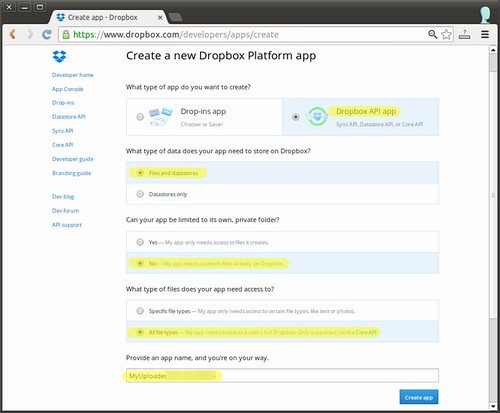
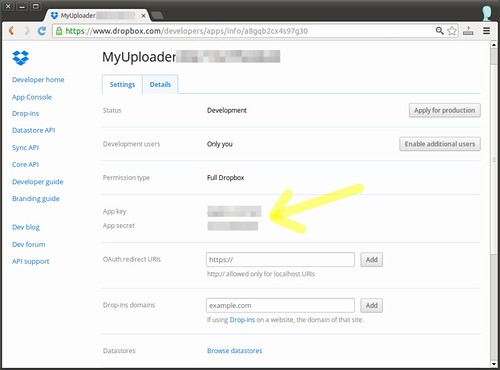
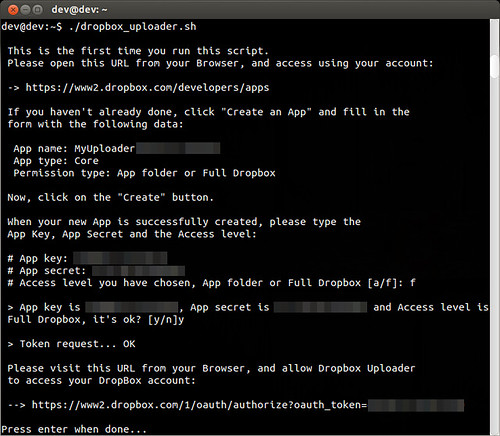
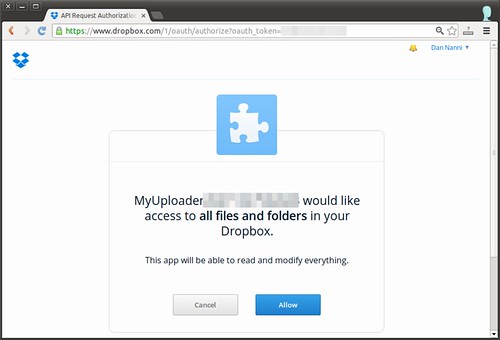
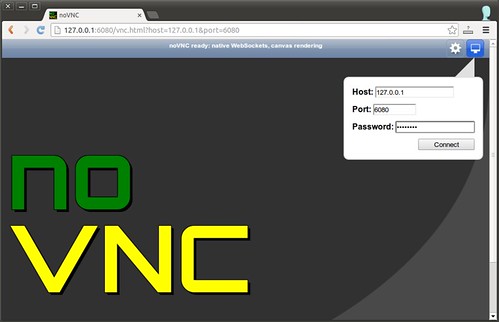

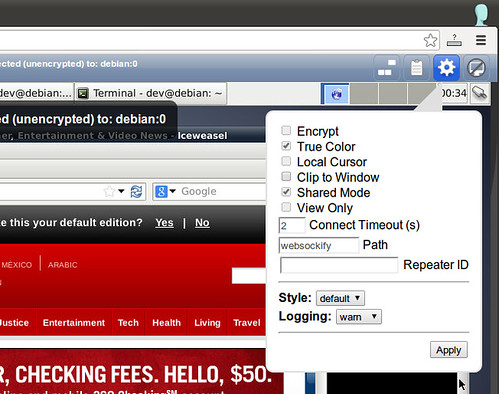
 Figure 1. Simplified High-Level Overview of the Queues on the Transmit
Path of the Linux Network Stack
Figure 1. Simplified High-Level Overview of the Queues on the Transmit
Path of the Linux Network Stack
 Figure 2. Partially Full Driver Queue with Descriptors Pointing to SKBs
Figure 2. Partially Full Driver Queue with Descriptors Pointing to SKBs
 Figure 3. Large packets can be sent to the NIC when TSO, UFO or GSO
are enabled. This can greatly increase the number of bytes in the
driver queue.
Figure 3. Large packets can be sent to the NIC when TSO, UFO or GSO
are enabled. This can greatly increase the number of bytes in the
driver queue.
 Figure 4. Interactive Packet (Yellow) behind Bulk Flow Packets (Blue)
Figure 4. Interactive Packet (Yellow) behind Bulk Flow Packets (Blue)






